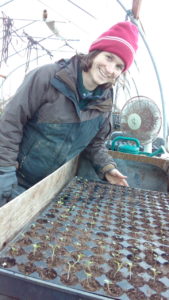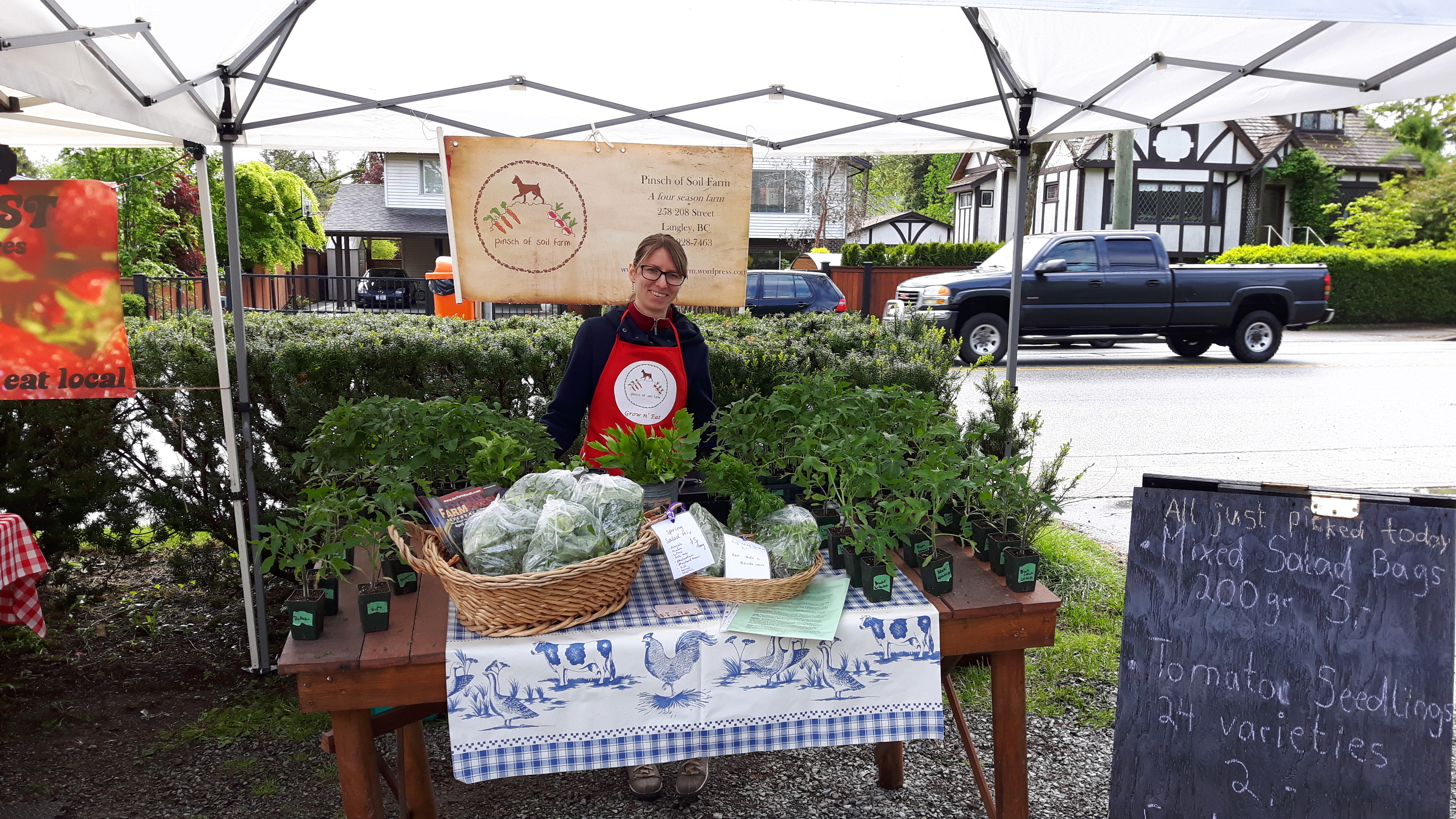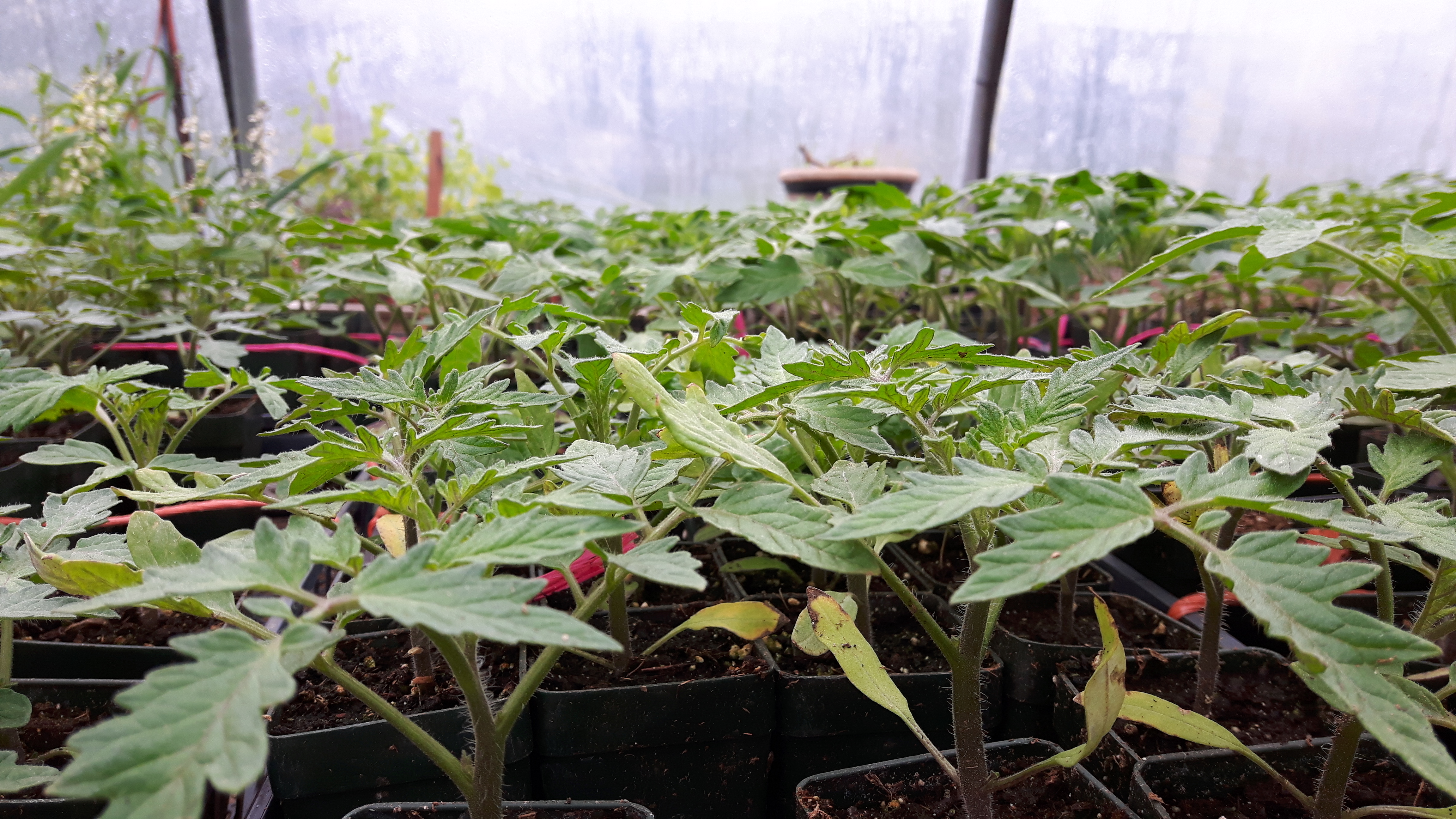Hello again,
And we thought winter is over… . We’re into the first week of March and we see our fields are covered in snow once more. With temperatures dropping below 0 degrees over night, you might wonder when we start our growing season. We actually started already.
In the Greenhouse

We seeded the beds in our greenhouse first week of February and the first seedlings are up! Salad greens, mustard greens and arugula are all poking through the soil. Additionally, we planted garlic along the edges of the beds and they’re up as well.
On the heat mat

When we first started, we purchased a heat mat to get our seedlings started early. It’s big enough that we can fit 4 seeding trays (or flats) on it. It comes with a thermostat that plugs into the soil, therefore making sure the seeds have a warm bed. To help it, we usually cover those trays with plastic to keep the heat in.
In our heat box

Soon the heat mat wasn’t enough anymore for our projects. So we built a box in which a heater blows warm air. It’s an electric heater which is plenty good for our 4′ x 3′ box. The bottom part is made out of 2×10’s with a little cut out for the heater. We covered that with a larger wire mesh to place the seeding trays on it. The top part is simply a light frame with all sides and the roof covered with plastic. This heat box gives us enough room to start an additional 10 seedling trays earlier. On February 15 we filled those with onion and leek seeds.
On our heat cable
But there is more to seed of course! Broccoli, cabbage, kohlrabi, flowers, more lettuce. Now we needed more heat to give those seeds a warm start. Therefore, last year, we bought a heat cable. We laid it out on sand and covered it with about 1/2 inch of sand.
Now we needed more heat to give those seeds a warm start. Therefore, last year, we bought a heat cable. We laid it out on sand and covered it with about 1/2 inch of sand.
The heat cable gives us the option to warm up additional 8 flats. 3 years ago we had built a greenhouse in the greenhouse. We basically built a box 8’x4′ which we fill every November with fresh horse manure. We keep the box open for better ventilation. However, the heat generated through the composting keeps sensitive plants from freezing. We simply dig their containers 2-3 inches into the manure. Most of that heat is gone by the beginning of February, which is when we bring in sand and the heat cable.
In our hot beds

Our first greens however, grow outside the greenhouse. We built 5 hot beds, all south facing. Our hot beds are basically wooden boxes, for which we used untreated wood, 4’x8′, 20″ deep. Every winter, we fill them up to about 1′ with fresh manure. We then put a thin layer of cardboard over it, this is just to alert us when we’re digging too deep into the soil. A 4-5″ layer of garden soil then goes on top. We let it sit and settle for about a week and then started seeding arugula, mustard greens and salad. The fresh manure releases heat as it is composting down, essentially warming up the growing bed for our seeds. We covered out hot beds respectively with a little plastic tunnel, an old glass patio door and old dome skylights. For heat retention, the skylights are way better than the other two options.


